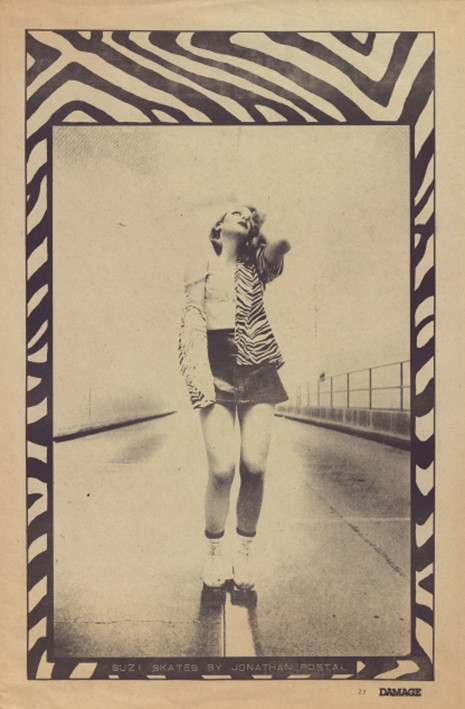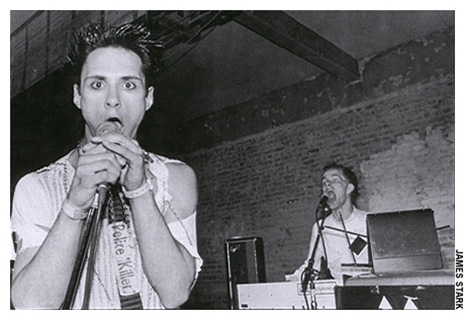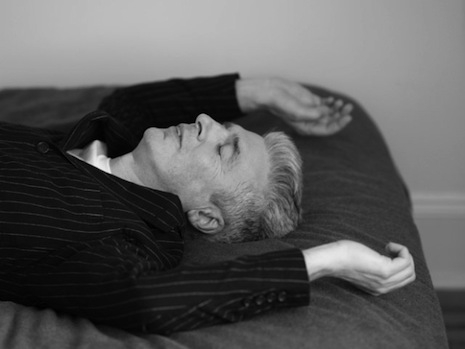
Ryan Richardson is one of the United States’ foremost collectors, archivists, and dealers of punk rock records and ephemera, as well as being the Internet saint who created free online archives of Star, Rock Scene, and Slash magazines. He also runs Fanzinefaves.com, a repository of various early punk zines as well as the exhaustive punk info blog Break My Face.
We’ve written about Richardson’s punk altruism before here at Dangerous Minds. The last time was when he uploaded the entire print run of the seminal transgressive LA artpunk publication, NO MAG, over at his site CirculationZero.com.
Richardson has done his Good Samaritan work once again, this time with the upload of the complete print run of the Bay Area’s Damage magazine which was published between July 1979 and June 1981. Damage concentrated its coverage on the San Francisco and LA punk scenes, but also covered underground music scenes worldwide. Richardson calls it “a definite contender in a state crowded with fanzine heavyweights.”
Thirteen issues were published including a freebie special edition released between the 9th and 10th issue for the Western Front festival which Damage co-sponsored.
The newsprint zine featured bold graphics, photography, and loads of writing and interviews of great historical importance to anyone following the early California punk scene. Your mileage may vary, but the San Francisco scene between 1978-1983 is perhaps my personal favorite all-time music scene, so these issues are absolute gold to me. For my money, nothing beats the aesthetic of arty punk fanzines prior to the age of desktop publishing, and Damage is as fine an example of the form as any you care to name.
Publisher Brad Lapin spoke of Damage’s importance as a historical record in a 2010 statement to the San Francisco Zine Fest:
While I trust that the magazine speaks for itself, both for good and ill, I suppose I could say by way of explanation that, beyond all the sex, drugs and rock’n’roll, that is, beyond the pure visceral FUN of punk and life in the underground, there were also deeply serious issues of politics, of social justice and, above all, of aesthetics that connected and inspired the many people involved in the Damage project. Because these concerns were particularly articulated in the scene as it existed in San Francisco three decades ago, Damage’s importance today, like that of the other zines, is as a kind of constant witness to an unique time, place and circumstance; one that spoke and one hopes still speaks to the immanent primacy of youthful idealism and to the notion that there is a deep and abiding value in a radical, even desperate rejection of the commonplace, the accepted, the normal. Conformity and regimentation then, as now, are the foresworn enemies of the creative energy that is the essence and the wellspring of youth. That stance of absolute defiance to which the punk aesthetic aspires and which, in fact, is it’s raison d’etre is no less a viable ideal today than it was 30 years ago. If anything, it is more necessary and more important.
The download of the complete set is free, but Richardson asks that those taking advantage make a charitable donation to Electronic Frontier Foundation, Doctors Without Borders, or Austin Pets Alive. Donations to these charities make the project worthwhile for Richardson, so it would be, you know, the cool thing to do to toss a few bucks that way, considering the amazing gift being provided here. Richardson has placed donation links on CirculationZero.com—go there now to download Damage, and while you’re waiting on that file transfer, scroll through this gallery of covers and pages from Damage‘s history:

More after the jump…















